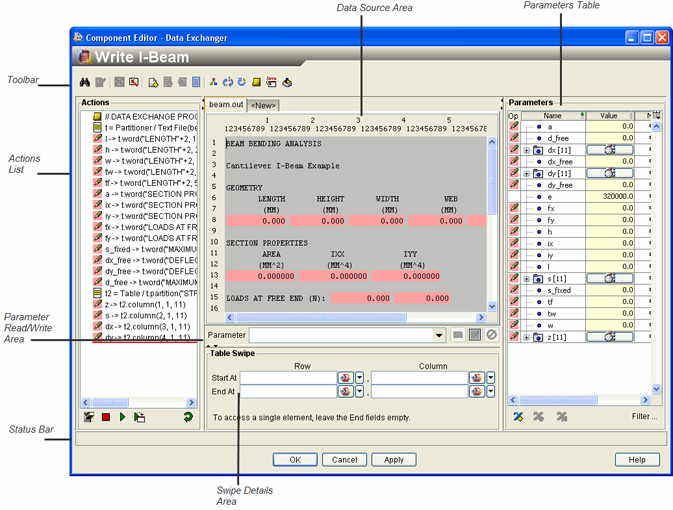About the Data Exchanger Component | ||||||||||
|
| |||||||||
You can use the Data Exchanger to copy data from one file to another file, or you can use it to look up reference data in a read-only file. If necessary, data can be read from and written to the same file. The Data Exchanger can process multiple files at one time. General programming commands written in Java can be inserted between the Data Exchanger actions to perform a calculation, to loop over multiple data items, and to recover from processing errors.
Typically, the Data Exchanger is used to prepare input files for external programs and to extract data from program output files. It can be used by itself in an Isight simulation process flow. In addition, it is included as part of the Simcode component.
The Data Exchanger Component Editor is shown below, with the main sections labeled.

The Data Exchanger Component Editor is divided into the following areas: Toolbar, Actions List, Data Source Area, Parameter Read/Write Area, Swipe Details Area, Parameters Table, and Status Bar.
To start the Data Exchanger Component Editor,
double-click the Data Exchanger component icon ![]() . When you have finished configuring the Data
Exchanger Component Editor, click OK
to close the editor. For more information about inserting components
and accessing component editors, see Working with Components in the Isight User’s Guide.
. When you have finished configuring the Data
Exchanger Component Editor, click OK
to close the editor. For more information about inserting components
and accessing component editors, see Working with Components in the Isight User’s Guide.